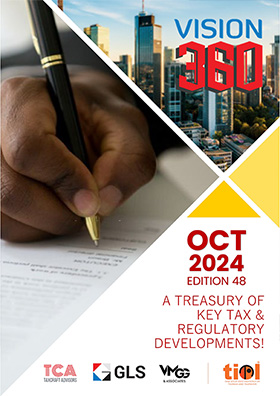World's largest survey by WHO, UNDP & UNODC - one in five girls sexually abused; one in four children physically abused
By TIOL News Service
NEW YORK, DEC 14, 2014: ONE in four children has been physically abused, one in five girls has been sexually abused and one in three women has been a victim of physical violence at some point in her lifetime, according to the first report of its kind on violence prevention by three United Nations agencies released on Friday.
Jointly published by the World Health Organization (WHO), the UN Development Programme (UNDP), and the UN Office on Drugs and Crime (UNODC), The Global Status Report on Violence Prevention 2014 is the first survey of its kind to assess national efforts to address interpersonal violence, namely child maltreatment, youth violence, intimate partner violence, sexual violence, and elder abuse at home, school and communities.
The report, containing data from 133 countries, covering 6.1 billion people and representing 88 per cent of the world's population contains individual country profiles that reflect the extent to which key violence prevention programmes and laws and selected services for victims of violence are being implemented. It is intended for use by governments to help identify gaps and encourage and guide actions.
For example, only one third of the countries surveyed are implementing large-scale initiatives to prevent violence, such as bullying prevention programmes, visits by nurses to families at risk, and support to those who care for older people,"according to the report.
The report showed that "only half of all countries have services in place to protect and support victims of violence."
According to the report, 475,000 people were murdered in 2012, and homicide is the third leading cause of death globally for males aged 15-44 years, "highlighting the urgent need for more decisive action to prevent violence."
"Non-fatal acts of violence take a particular toll on women and children," the report showed. "One in four children has been physically abused; one in five girls has been sexually abused; and one in three women has been a victim of physical and/or sexual intimate partner violence at some point in her lifetime."
WHO Director-General Dr. Margaret Chan said the consequences of violence on families and communities are profound, and can result in lifelong ill health for those affected.
"Yet we know what works to prevent violence in our homes, schools and workplaces and on our streets and playgrounds," Dr. Chan added. "We should take inspiration from governments which have demonstrated success in reducing violence by taking the steps needed. They have shown us that indeed violence is preventable."
Despite indications that homicide rates decreased by 16 per cent globally between 2000 and 2012, violence remains widespread.
The report assessed the scale of implementation of violence prevention programmes. It shows, for example, that:
- one half of countries are implementing school-based programmes to teach children and adolescents "life-skills" such as non-violent conflict resolution;
- one half of countries are promoting efforts to change gender norms supportive of violence against women;
- one third of countries are putting in place programmes to improve parenting in families at risk of violence
- less than one quarter of countries are developing public information campaigns to prevent elder abuse.
UNDP Administrator Helen Clark noted that "this report takes stock of the measures countries are taking to prevent and respond to interpersonal violence, but the report also reveals gaps in global violence prevention which must be filled, such as the quality and reach of prevention programmes, the access to services for victims, particularly for women and girls who are disproportionately affected by violence, and the enforcement of existing laws."
The report also reviewed 12 laws which are relevant for violence prevention. It shows, for example, that:
- 98 per cent of countries have laws against rape;
- 87 per cent of countries have laws against domestic violence;
- 84 per cent of countries have laws against carrying weapons in schools;
- 40 per cent of countries have laws against abuse in institutions for older people.
The proportion of countries with laws to prevent violence and the extent to which countries report these laws as being fully enforced (n = 133 reporting countries). Credits: WHO/UNDP
UNODC Executive Director Yury Fedotov said: "Laws protecting citizens against violent crime send a clear message to society about what is acceptable."
"With this 'Global status report on violence prevention 2014', we have a useful tool for identifying the gaps in legislation and enforcement in countries, which can help to indicate what further action is needed to ensure reductions in violent crime,"he said.
The report drew attention to the need for care and support to victims of violence for reducing psychological trauma, helping victims heal, and preventing further involvement in violence.
"Despite strong evidence linking experiences of violence to mental health problems, under half of countries have mental health services to address victim needs, with only 15 per cent of countries in Africa offering such services,"according to the report.














